However, with the introduction of scientific methods and technology to anthropology, researchers have overthrown that existing academic theory about the origins of today's Koreans.
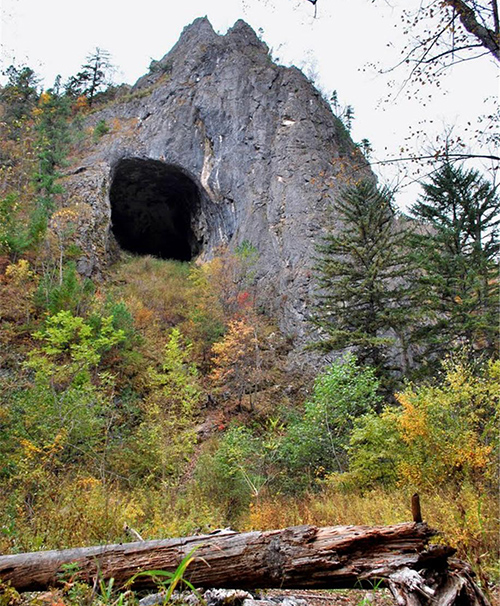
The UNIST and from international institutions conducted a joint genome research by using ancient bones from the Devil’s Gate Cave in Russia's Far East. Ancient humans are believed to have live in the cave between 7,000 and 9,000 years ago.
A related study has recently been under the media spotlight here. The Ulsan National Institute of Science and Technology (UNIST) and an international research team composed of researchers from the U.K., Russia and Germany announced on Feb. 2 that the gene structure of modern Koreans has been affected by both northern and southern neighbors over thousands of years, and that the gene structure of modern Koreans is closer to that of southern Asians.
The UNIST Genome Research Foundation conducted its research with a team from Cambridge University in the U.K., from the Russian Academy of Sciences, and from the University of Potsdam in Germany. The joint research team extracted DNA from human skulls that were found at the Devil’s Gate Cave, located in the Russian Far East, north of the Dumangang River, in order to conduct an analysis of its genetic information. The Devil’s Gate Cave was first discovered in 1973. The cave is believed to be a shelter for ancient humans from 7,000 up to 9,000 years ago.
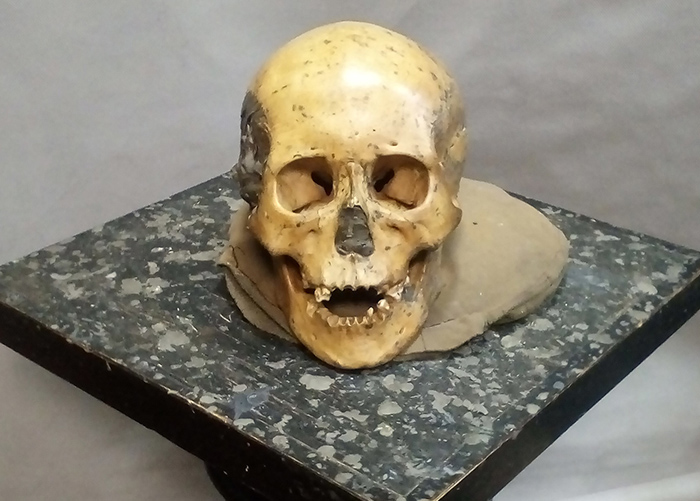
In order to discover the origins of modern people, a research team conducted a genome analysis of DNA that was extracted from a human skull found at the Devil’s Gate Cave, where ancient humans are believed to have live between 7,000 and 9,000 years ago.
According to the genome analysis of the ancient bones from the Devil’s Gate Cave, the research team discovered common characteristics that can be found in modern people and ancient people, such as brown pupils and shovel-shaped incisors. They also witnessed some common genetic features that can be seen across modern East Asian people, such as genes that make digesting milk difficult, that make one susceptible to high blood pressure and that create a weaker body odor and drier earlobes.
The research team said that the ancient humans who lived in the Devil’s Gate Cave used to be considered to be ancestors to the Ulchi tribe that lives near the cave today. Researchers also showed that the Ulchi tribe has the closest genetic structure to today's Koreans, the team said. Also, the mitochondria genome found in ancient humans was the same as that found in modern Koreans.
The research team also compared gene mutations between ancient humans from the Devil’s Gate Cave and that of approximately 2,500 people from about 60 Asian countries. The results showed that the ancient humans combined with genomes from isolated indigenous groups in Vietnam and Taiwan were best expressed by the genetic variation represented in today's Koreans.
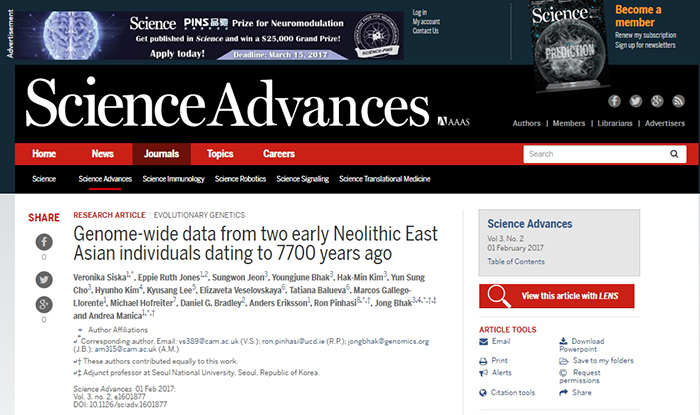
Science Advances publishes the results of a joint collaboration between the UNIST and international research teams.
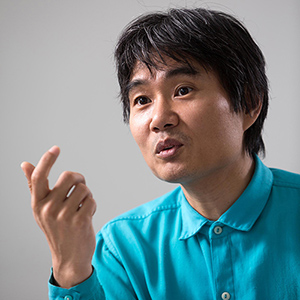
Director Bhak Jong Hwa of the Genome Research Foundation at UNIST leads the genome research team.
Based on the results of the genome mutation analysis, the research team recreated a gene of an ancient Korean using a computer. Most of the genes in the recreated model of ancient people were from southern Asians, whereas genes of northern people were much fewer number and proportionally less.
“Even though Koreans have traces of combinations from both sides, the actual genetic structure of modern Koreans is much closer to that of southern Asians," the research team explained. “This is because tribes in southern regions who had permanent crops had more children and expanded much more than those who are from the north who are believed to have been hunter-gatherers or nomads.”
Director Bhak Jong Hwa of the Genome Research Foundation at UNIST said, “The results of the ancient genome information research have brought us a vast amount of genetic big data.”
“This research discovered a crucial biological bridge that explains how the roots of the Korean people originated and their results,” he added.
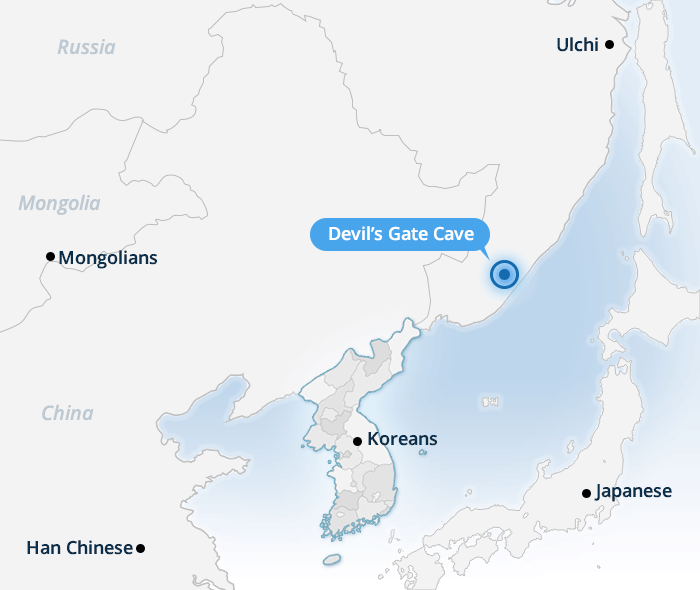
The remains found at Devil's Gate Cave are surrounded by many ethnic groups.
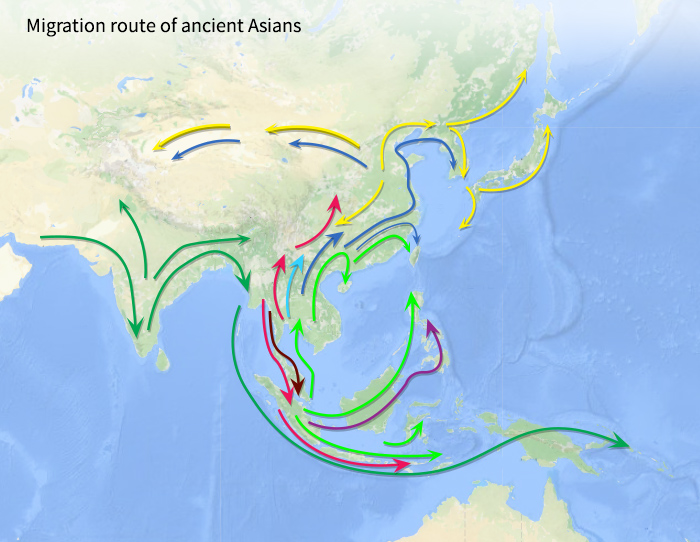
Based on a genetic analysis of ancient humans from the Devil’s Gate Cave and genome mutation research across Asia, a research team recreated a possible migration route for our ancestors.
By Yoon Sojung
Korea.net Staff Writer
Photos: UNIST
arete@korea.kr
Most popular
- Military discharge sets stage for reunion of all 7 BTS members
- BTS to mark 12th anniversary of debut with 2-week festival
- Lee Jae-myung officially sworn in as nation's 21st president
- Presidents Lee, Trump discuss tariff deal in first phone talks
- President's 1st executive order is launch of economic task force
